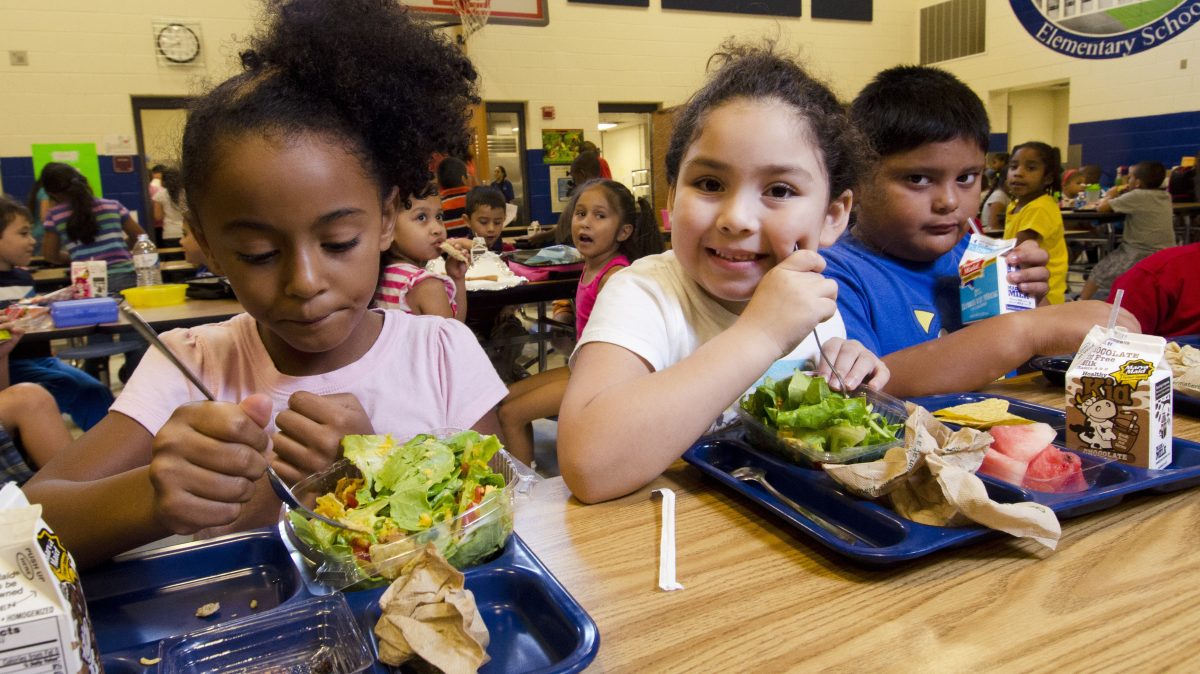Getting Nutrition from Farm to Plate
TOPICS
StillFarmingZippy Duvall
President

photo credit: USDA
Zippy Duvall
President
For most people, when they see a cow, they just see a cow. When they see a field of produce, they just see a field.
For farmers and ranchers, we see much, much more. We see nutrition. And we want that nutrition to get to people who need it.
We’re proud to be #StillFarming, providing nutrition for all who need it.
We see nothing less than a miracle—the miracle that seeds, rain, sun, animals, and the farmer’s care can turn an empty field or pasture into the source of human survival.
We see months of hard work by our farm families and employees—work that’s only meaningful if it results in feeding our fellow citizens.
It’s difficult to dispose of milk or plow under a crop because there’s no market for it. We think of all that nutrition going to waste instead of feeding people. Too many farmers and ranchers have had to experience that in the past few weeks as the market for what we produce has shrunk due to COVID-19.
Sure, grocery stores are as busy as ever as Americans cook more. But most of the food that was destined for restaurants and school cafeterias no longer has a home. Almost overnight, one-third of the country’s milk demand dried up. It’s costly and difficult to retool a processing plant for retail—a 5-pound wheel of cheese or a 10-gallon bag of milk can’t be sold at your local grocery store.
The near-closure of America’s $800 billion-plus restaurant industry is hurting demand for beef, chicken, pork, farm-raised fish and seafood, and almost all fruits and vegetables. About 80 percent of the tomato crop in Florida alone usually goes to restaurants.
So, what can be done? We are seeing farmers’ and ranchers’ ingenuity go to work to get the nutrition we are proud to grow to people who need it. Drive-through farms and farmers markets are popping up. U-pick options have increased. And farmers and food banks are working together to feed the hungry.
Many farmers and ranchers already had great relationships with their local food banks. In fact, over the past few years through our Harvest for All program, Farm Bureau members have donated more than 306 million pounds of food, $7.8 million, and 179,000 volunteer hours to groups fighting hunger in their local communities. Now, with the new challenges we all face, farmers and ranchers are ready to do even more. Food banks are reporting anywhere from a 40 percent to 100 percent increase in demand.
However, the reality is it costs money to harvest, pack and transport food—money that many farmers and ranchers simply don’t have in the wake of a trade war, weather disasters and back-to-back years of prices below the cost of production. We need help in order to help others.
A couple of weeks ago, the American Farm Bureau Federation and Feeding America, the nation’s largest network of food banks, sent a joint letter to the Agriculture Department, suggesting a program to help offset the cost of getting fresh foods—nutrition—to people in need. And our timing could not have been better, as we learned that USDA was thinking of and working on the same issue. It’s gratifying that USDA’s initial plan includes $3 billion to empower the food system to find solutions, which was the heart of our request. We will also need regulatory flexibility to ensure that packaging, storage and transportation requirements don’t get in the way of getting nutrition where it is needed.
We know USDA is committed to helping us help food banks. It fits Agriculture Secretary Sonny Perdue’s philosophy of doing good and feeding everyone. And we are grateful to our partner, Feeding America, for helping us start this very constructive conversation with USDA. Quick action is needed. Every day that passes, fresh milk, vegetables and other produce are lost. The Farm Bureau family is committed to doing whatever we can to help ensure no one goes hungry, just as we’ve been doing for years. We’re proud to be #StillFarming, providing nutrition for all who need it.
Zippy Duvall
President
Vincent “Zippy” Duvall, a poultry, cattle and hay producer from Greene County, Georgia, is the 12th president of the American Farm Bureau Federation.